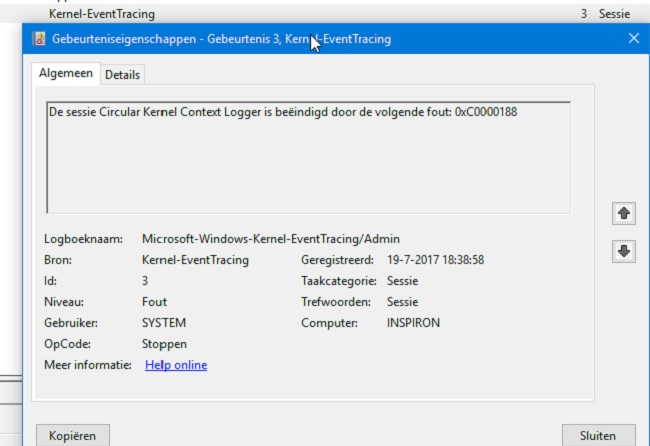After a short period of typical use, some users experiencing a problem with the Windows operating system report that their screen has been replaced with an unrecognisable, inconsistent grey colour.
The following error message may appear in one or more entries in the Event Viewer of computers where this issue has occurred:
Contents
Method 1: Verify That Superfetch is Activated And Processing Requests.

If the Superfetch service is stopped or not operating, the Event Viewer may be flooded with warnings like “Session ‘Circular Kernel Context Logger’ Stopped Due to the Following Error: 0xc0000188.”
If that’s the case, then ensuring that the Superfetch service is both enabled and functioning is all that’s needed to fix the issue and prevent this error message from appearing again. To use this strategy and see if it helps with the issue at hand, you must:
Step 1: When you press the Windows logo key plus R, a menu will appear that allows you to use the Run command.
Step 2: In the Run box, type services.msc and hit Enter.
Step 3: Locate the Superfetch service in the Services manager, then right-click on it and select Properties from the context menu that appears.
Step 4: Select “Automatic” from the drop-down menu next to the Startup type: field.
Step 5: Just hit the Start button to activate the service if it wasn’t already active. If the service was already active, you can skip this procedure.
Step 6: Select Apply, then OK, to finish.
Step 7: Get out of the Services manager and reboot the machine.
After the computer has restarted, keep using it to see whether the issue persists.
Method 2: Raise the limit on how large Startup Event Trace Sessions files can be.
The insufficient size of the Startup Event Trace Sessions is another typical reason for Windows users to lose their display and see “Session ‘Circular Kernel Context Logger’ Stopped Due to the Following Error: 0xc0000188” in their Event Viewer.
If that’s the case, raising the Startup Event Trace Sessions maximum file size should take care of the issue. To accomplish this, you must:
Step 1: To access the Start Menu, press the Windows logo key and.
Step 2: Conduct a “cmd” search.
Step 3: And open a Command Prompt with superuser permissions, just type cmd in the search bar and then right-click the result to select Run as administrator.
Step 4: At the elevated Command Prompt, type and press Enter to execute:
Perfmon:
Step 5: Your computer should now display the Performance Monitor. Expand the Data Collector Sets section by double-clicking on it in the left pane of the Performance Monitor.
Step 6: Select Data Collector Sets and then Startup Event Trace Sessions.
Step 7: Find the ReadyBoot entry in the Performance Monitor’s right pane and double-click it.
Step 8: Change the number in the Maximum Size box to 40 on the Stop Condition tab.
Step 9: Close the Performance Monitor, the elevated Command Prompt, and restart the machine after clicking Apply and then OK.
The next time your computer starts up, see if it still has the same problem.
Method 3: The SETUP.ETL File Must Be Replaced on Your Machine.
The last, best option, if none of the other options have worked, is to use a hail Mary and make your computer overwrite the SETUP.ETL file. It appears that the SETUP is corrupt.
Having your computer replace its existing SETUP.ETL file with a new one should fix any corruption or other damage imposed upon the old file, which is often the case with this issue.
If you want your computer to delete the existing SETUP.ETL file and install a new one, you must:
Step 1: When you press the Windows logo key plus R, a menu will appear that allows you to use the Run command.
Step 2: In the Run prompt, enter the following and hit Enter:
%windir%\panther
Step 3: Using the new instance of Windows Explorer, look for a file named setup.etl, right-click it, and select Rename from the context menu that appears.
Step 4: Make the file setup.old and hit Enter to confirm.
Step 5: When prompted, select “Yes” when asked if you are sure about altering the file’s extension.
Step 6: If your computer is acting up, try restarting it. As soon as Windows loads, a new SETUP.ETL file will be generated in place of the one you renamed. As soon as you’ve finished, examine the situation to see if the issue has been fixed.






























